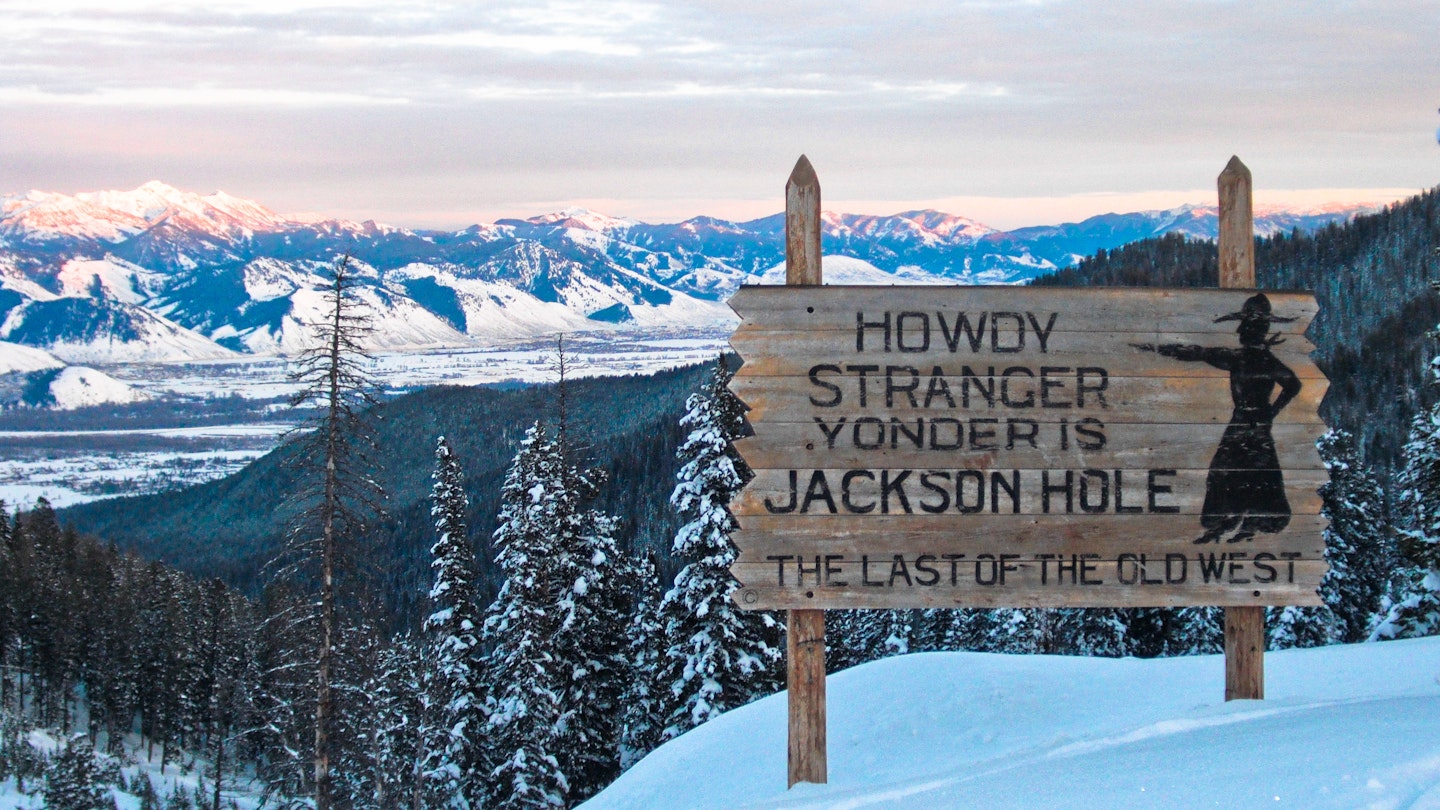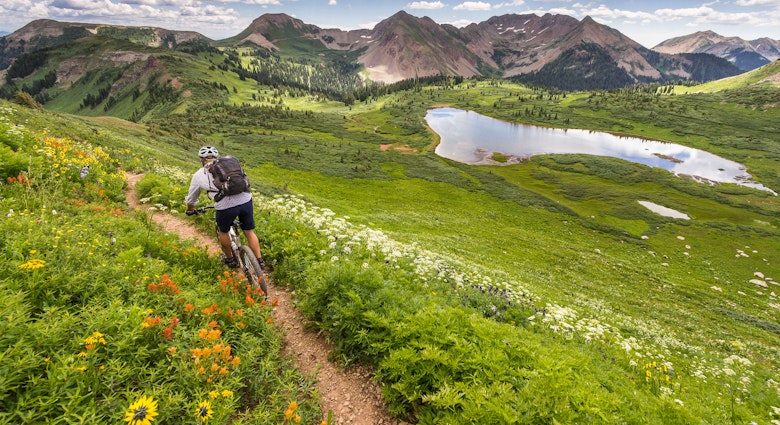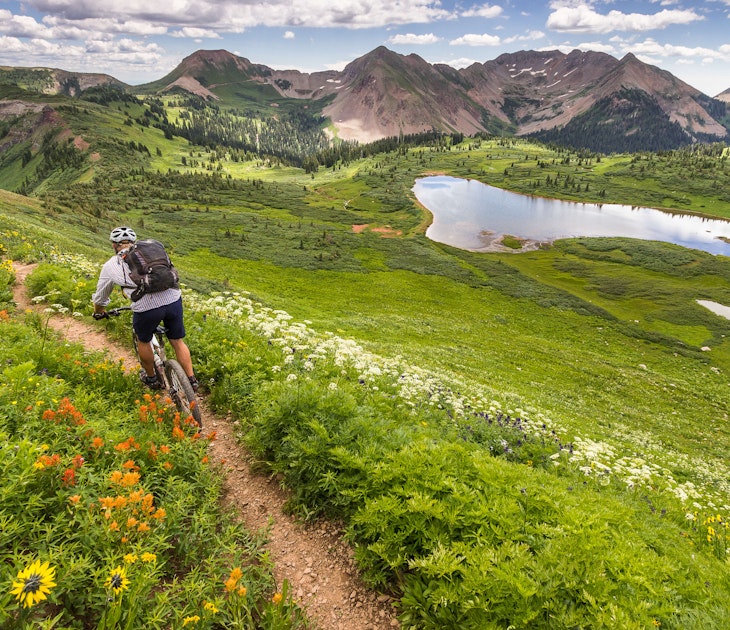

Here's everything you should know before visiting the Wild West of Jackson Hole. Tenley Thompson/Getty Images
Jackson Hole’s towering peaks, unspoiled wilderness, bountiful wildlife, and Wild West vibes have made it quite a popular destination. But whether you visit in winter for skiing or summer for hiking and mountain biking, you should brush up on Jackson Hole safety and etiquette first.
From grizzly bears to backcountry adventures, here’s what you should know before you visit Jackson Hole.
1. Learn the right names
This region of northwest Wyoming can be confusing. “Jackson” is the name of the town. “Jackson Hole” is the name of the valley that runs alongside the Teton Range; it encompasses the town of Jackson. “Jackson Hole Mountain Resort” is the region’s largest, most well-known ski area; it’s located outside the town of Jackson in its own community called “Teton Village.”
- placement: fullWidth
- path: articles/in-content-top
- possible size: [970, 250], [970, 90], [728, 90], [300, 250], [320, 50], [1, 1],
- targeting:
{ "url": "things-to-know-before-traveling-to-jackson-hole", "destination": "Wyoming", "continent": "North-America", "country": "USA", "region": "Wyoming" }
“The Tetons” is an umbrella term for the entire Teton Range, which is part of the Rocky Mountains. “Grand Teton” is the name of the highest peak in this range, standing 13,775ft-tall. (There’s also Middle Teton and South Teton.) “Grand Teton National Park” is the 310,000-acre national park that protects the Tetons.
Also, if you mess up and accidentally use the wrong name, it’s no big deal — no one is going to call you out on it. But you’ll feel more confident once you know the right terminology.

2. Take it easy while you acclimate to the altitude
The town of Jackson is perched at 6237ft above sea level. If you’re out hiking or skiing, you could reach elevations above 10,000ft. Take it easy for the first few days while you adjust to the altitude, especially if you’re coming from a much lower elevation. Read up on the signs of altitude sickness, which can include fatigue, headaches, vomiting, shortness of breath and nausea. Most of the time, these symptoms resolve themselves after a few days.
3. Check the forecast and prepare for unexpected weather conditions
As with other mountain destinations, Jackson Hole’s weather can be wildly unpredictable, no matter the season. Snowstorms, thunderstorms and flash foods can develop quickly, with little to no warning. Before you head out to adventure for the day, check the forecast — but also be prepared for the weather to change at a moment’s notice. If the forecast shows that inclement weather might be on the way, play it safe and stay indoors (or, at the very least, remain near safety and shelter).

4. Pack layers and waterproof gear
Temperatures can and do swing throughout the day, as clouds roll in front of the sun or the wind picks up. You might be comfortable in a T-shirt and shorts in the afternoon. But if you’re planning to stay out after the sun goes down, you’ll find yourself quickly becoming chilly. And if you’re out hiking in Jackson Hole, you might get caught in a rainstorm. Pack layers and waterproof gear, and bring them with you when you head out for the day, even if the weather is currently warm and sunny.
5. Drink water and wear sunscreen
At higher altitudes, the sun is more intense and the air is dryer. As such, you’re much more susceptible to sunburn and dehydration in Jackson Hole. Always take the time to apply (and reapply) sunscreen, and consider wearing a wide-brimmed hat and sun-protective clothing. Bring or buy a reusable water bottle, then keep it full. Even if you have to take a few more bathroom breaks than normal, you’ll feel better if you stay hydrated.
6. Leave what you find and throw away trash
You’re probably visiting Jackson Hole because of its pristine wilderness areas and natural beauty. Want to keep it that way for future travelers? Throw away your garbage properly (don’t litter!) and leave everything as you find it. Don’t pick wildflowers, don’t take rocks as souvenirs, don’t knock down bird nests, don’t carve your initials into trees, don’t disturb historic artifacts. The only thing you should be “taking” is photos.
Along those same lines, always hike on established trails and stay “in bounds” — don’t veer off the path (even if you’re trying to avoid a puddle), as your footsteps can damage fragile ecosystems.
- placement: fullWidth
- path: articles/in-content-middle
- possible size: [970, 250], [970, 90], [728, 90], [300, 250], [320, 50], [1, 1],
- targeting:
{ "url": "things-to-know-before-traveling-to-jackson-hole", "destination": "Wyoming", "continent": "North-America", "country": "USA", "region": "Wyoming" }

7. Keep your distance from wildlife and respect seasonal closures
You’ve probably seen the headlines about tourists trying to touch or take selfies with bison, elk and other wild animals, sometimes with disastrous consequences. Animals were here long before humans — and they’re often much larger and more powerful than us — so be respectful and keep your distance. The National Park Service recommends staying at least 300ft away from bears and wolves, and at least 75ft away from all other animals. Don’t feed, chase, throw things at or otherwise harass animals. And, for your own safety, never, ever get between a parent and a juvenile.
Land managers may also temporarily close hiking trails and other recreation areas to protect animals, such as bald eagles or bighorn sheep. Make yourself aware of these closures and respect them.
8. Visit national parks during off-hours or shoulder seasons for smaller crowds
Jackson Hole is the gateway to Grand Teton National Park and Yellowstone National Park. These public lands are incredibly popular, which means you might encounter packed parking lots, busy hiking trails and traffic jams. This is especially true during the summer, when kids are out of school. Avoid the crowds by visiting during off-hours, such as first thing in the morning, or during the shoulder seasons of spring and fall. (This same advice also applies to other popular Jackson Hole attractions.)
9. Take public transit or use hotel shuttles
In the winter — and especially on powder days — traffic and parking at Jackson Hole Mountain Resort can get pretty hairy. (Also, parking is not cheap, costing up to $45 per day during peak season.) You can save yourself the hassle by booking a hotel that offers a free ski shuttle (many of them do), or by riding one of the public START buses for just a few bucks.
If you must drive, consider arriving a little later in the day to give the morning rush time to clear out. The same goes for the end of the day — stick around Teton Village for an après drink or snack to let the traffic clear up.

10. Give yourself buffer days for winter travel
Especially if you’re visiting in the winter, give yourself a few buffer days in case of inclement weather. Snowstorms can disrupt flights or even shut down the Jackson Hole Airport, and roads may become impassable. (Take it from me, I got stuck in Jackson Hole during an epic snowstorm last winter.)
11. Stay at a hostel or go camping to save money
Jackson Hole is known for its luxury hotels and multimillion dollar homes. But don’t let this destination’s glitzy reputation fool you — you can still visit on the cheap. Jackson Hole has a surprising number of hostels and more affordable lodging options, such as Cache House, the Hostel, the Alpine House and Anvil Hotel. You can save even more by going camping, and the lack of light pollution makes Jackson Hole an incredible place to do some stargazing. Just be sure to book campsites and hotels early, as they have a tendency to book up, especially during peak seasons.
12. Wear protective gear when adventuring
No, helmets are not dorky. Bring your own or rent one if you’ll be skiing, snowboarding, mountain-biking, climbing, or doing some other potential dangerous activity. If you’re mountain-biking, it’s also a good idea to wear elbow and knee pads, as well as a chest protector.
- placement: native
- path: articles/in-content-native
- possible size: [f, l],
- targeting:
{ "url": "things-to-know-before-traveling-to-jackson-hole", "destination": "Wyoming", "continent": "North-America", "country": "USA", "region": "Wyoming" }
Along those same lines, always recreate with a friend — or, at the very least, let someone know where you’re going.
13. Explore the backcountry with a guide
Want to ski off-piste and explore the backcountry? Unless you’re experienced and have gone through avalanche safety training, it’s best to go with a guide. Book one through Jackson Hole Mountain Resort, Teton Backcountry Guides, Jackson Hole Mountain Guides, and other outfitters.
And no matter what kind of outdoor recreation guide you’re hiring — whether for white water rafting, hiking, mountain skiing or skiing — expect to tip them 10 to 20%.
Be aware that animals do wander into the road, so drive carefully at all times. Aaron J Hill/Shutterstock

14. Slow down to keep animals (and yourself) safe
Animals are everywhere in Jackson Hole. Keep your eyes on the road and slow down when you’re driving at dawn, dusk and after dark, just in case a moose or bear decides to cross the road in front of you. As you’re driving, you might do a double-take when you see a “moose” standing motionless in the trees next to the road. These are reflective moose cutouts, and they’re designed to grab your attention and remind you to slow down.
15. Leave elk antlers on the ground or face a hefty fine
Every spring, the thousands of elk, moose and deer that live in Jackson Hole shed their antlers. You might be tempted to grab one as a souvenir, but you should leave it on the ground unless you’ve done your homework. There are very strict state and federal laws around collecting antlers, and you could face a hefty fine and other punishments for breaking them. For example, it’s always illegal to collect antlers from the National Elk Refuge; on other public lands, it’s prohibited for non-state residents until May 8.
16. Learn the right-of-way on trails
Many of Jackson Hole’s trails are multiuse, meaning they’re shared by hikers, mountain bikers, horseback riders and other users. As you might imagine, this can lead to some potentially awkward traffic jams, but there’s an established etiquette. For example, horses, mules, llamas and burros — known as stock animals — have the right-of-way in Grand Teton National Park. If you see them, step to the side to let them pass. Elsewhere, a good rule of thumb is “wheels yield to heels,” in other words, cyclists should give hikers the right-of-way.
If you’re riding a bike on the road or a paved path, always announce yourself (such as by ringing your bike bell or calling out) and pass on the left. Slow down around pedestrians.
17. Take care with fire and respect the rules
If you’ve been keeping up with the news, then you know that much of the West has been plagued by wildfires in recent years. Teton County is no exception. Wildfire season typically runs from June to September, but fires can happen at any time of year. If you’re camping, make sure to completely drench your campfire (then drench it again) before leaving. If you’re a smoker, extinguish your cigarettes completely and dispose of them properly.
Depending on the conditions, local officials may enact fire bans or restrictions, meaning you may not be able to build that campfire after all. Read up on the rules before you head out and follow them.
18. Carry bear spray and safely lock food away
When it comes to Jackson Hole wildlife, bears are in a league of their own. The region is home to both grizzlies and black bears, and you should be prepared in case you encounter either species. When you head into the wilderness, always carry bear spray (you can rent some if you don’t want to buy it). Make noise as you hike, and back away slowly if you meet a bear. If you’re camping, keep your food — including toothpaste — in a bear locker or bear bag. And don’t cook or eat inside your tent.
- placement: fullWidth
- path: articles/bottom
- possible size: [970, 250], [970, 90], [728, 90], [300, 250], [320, 50], [1, 1],
- targeting:
{ "url": "things-to-know-before-traveling-to-jackson-hole", "destination": "Wyoming", "continent": "North-America", "country": "USA", "region": "Wyoming" }
Explore related stories

Budget Travel
The cheapest time to visit Colorado, plus tips for staying on a budgetNov 21, 2024 • 9 min read


 Festivals & EventsWhen to go to Wyoming for powwows, powder and Yellowstone thrills
Festivals & EventsWhen to go to Wyoming for powwows, powder and Yellowstone thrillsJul 21, 2024 • 6 min read

 National Parks9 amazing places to visit in Wyoming for big nature, outdoor adventure and cool towns
National Parks9 amazing places to visit in Wyoming for big nature, outdoor adventure and cool townsJul 8, 2024 • 8 min read





